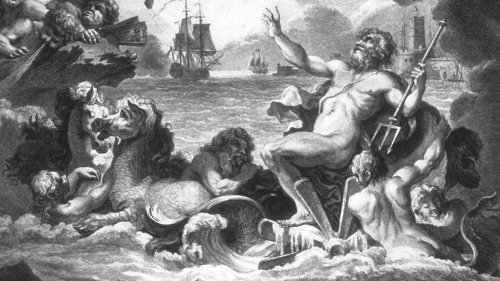
Quos ego--Sed motos praestat componere fluctus
"But first--it is better to calm the turbulent seas." (Virgil)
Neptune's Realm
Sparing no time for words, Neptune, god of the deep, helper to those who voyage in ships across his domain, brought order to the motion of the waves. Then he spoke to Aeolus, king of the winds, who had unleashed the fury of the brawling winds and howling storms to overwhelm and sink the ships of Aeneas. In the remote past--our legacy from Greco-Roman culture--gods and goddesses descended from their celestial realm to earth. There, they unloosed their heavenly powers and passions to control events. Scholars of antiquity balanced the mythic significance of these deities with their explanations of the phenomena of wind and wave. Aristotle, in his treatises De caelo, and Meteorologica, put forth his notions of the world. Pliny the Elder (Historia naturalis), Seneca (Quaestiones naturales), and Pythagoras, all made contributions toward a comprehension of the planet earth. Their speculations, however, were based on philosophy and logic, rather than by physical and experimental proofs. Nonetheless, this tradition of theoretical geography continued well into the fourteenth century. As mariners ventured beyond familiar coasts into the illimitable seas and oceans, they made discoveries and brought back observations of the earth's fluid envelope. Their new-found information could not be explained by the theories of the ancients, and required re-thinking into a body of knowledge we call science. In the sixteenth and seventeenth centuries, philosophers of natural science described the phenomena of winds and currents from empirical evidence, rather than using the philosophical construct of the ancients; yet their theories to explain them were basically unchanged from the time of Aristotle. The collective experience of sea-farers, when connected with advances made in the sciences of chemistry and physics, produced new interpretations of the world. This knowledge of the physical geography of the sea grew from many simultaneous lines of investigation, sometimes overlapping, sometimes containing large gaps, and even on occasion contradicting one another. But through the centuries one goal remained constant and undiminished in strength--to bring order out of chaos. Given expression in a cartographic form, these graphic images reveal more succinctly than the written word, and is grasped more quickly by the mind, man's search for, and knowledge about the watery sector of our globe the ancients called Neptune's Realm.


